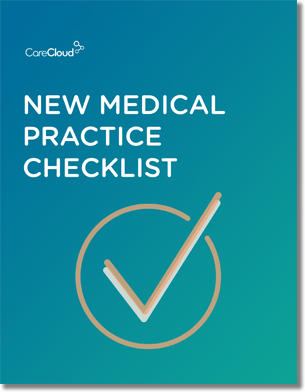With the recent announcement that more than half of eligible professionals have received incentive payments for attesting to Meaningful Use, it may seem the healthcare industry is truly embracing EHRs. Yet, a closer look reveals not everyone is jumping on the EHR bandwagon.
According to the Deloitte Center for Health Solutions, only 31% of solo practitioners have adopted a Meaningful Use certified EHR, placing them far behind mid-sized practices (62%) and large healthcare facilities (82%). Fortunately, cloud-based EHRs may be the solution to help solo practitioners bridge the gap.
Overcoming Barriers to EHR Adoption
79% of solo practitioners cite upfront costs as the primary barrier standing in the way of Meaningful Use certified EHR adoption. However, this is not usually a concern for solo practitioners who choose a cloud-based EHR solution.
Cloud-based EHRs don’t have the same costs associated with client-server EHRs because there is no need for hardware or software installation. Usually, the only cost is a predictable monthly fee.
Compare this with client-server EHRs that have a high upfront cost because of server installations and the need for new software that link your computers to the network.
The secondary barrier identified by 56% of practices of all sizes, but mostly impacts solo practitioners, is the ongoing maintenance costs of EHR adoption. Again, cloud-based EHRs are optimal solutions for combatting this obstacle.
Free automatic updates are usually included in the flat monthly rate charged by most cloud-based EHR vendors. This keeps your EHR solution up-to-date with no surprise costs.
On the other hand, updating a client-server EHR requires the installation of new software or hardware. Each upgrade is going to incur some sort of out-of-pocket expense.
Realizing the Benefits
By helping you through the obstacles to EHR adoption, cloud-based EHRs allow you to reap the rewards.
The greatest reward is the increased operational efficiency, which is so crucial for solo practitioners. Increased efficiency allows you to do more with less in the various areas of practice management.
This is especially true in staffing. The efficiency created by getting away from paper is proven to increase staff productivity. A 2011 study by MGMA reported that 61% of physicians with a fully implemented EHR saw an increase in productivity. EHR adoption means your staff can complete the same amount of work even with fewer employees, thus saving you money.
Efficiencies translate to practice workflow as well. With no other physicians to treat patients, solo practitioners have to see patients quickly without sacrificing the quality of care. EHR features like ePrescribing help get patients in and out of the office as quickly as possible.
Another benefit of cloud-based EHRs is the incentive payments received for attesting to Meaningful Use. Those solo practitioners beginning attestation this year still stand to make $39,000 in incentives. By the time your monthly payments add up to $39,000, your EHR should already be producing a positive ROI.
With plenty of cloud-based EHRs available, there shouldn’t be a reason for solo practitioners to lag behind their larger counterparts in EHR adoption rates. It’d be a shame if an integral part of the healthcare industry got left behind.
Want to see how EHRs can boost your bottom line? If so, check out this free webinar.

Do you know what you need when setting up a new medical practice?



